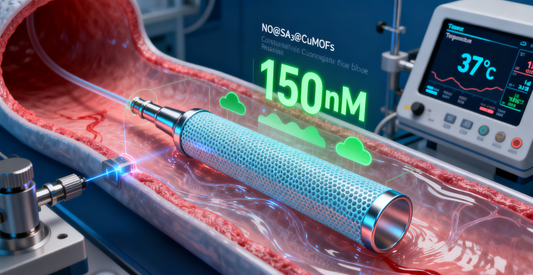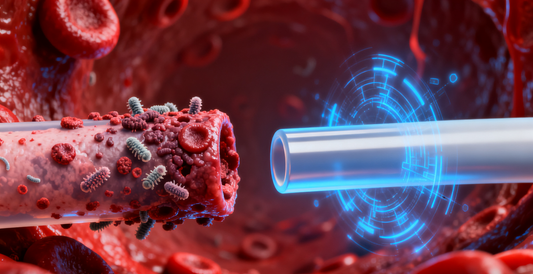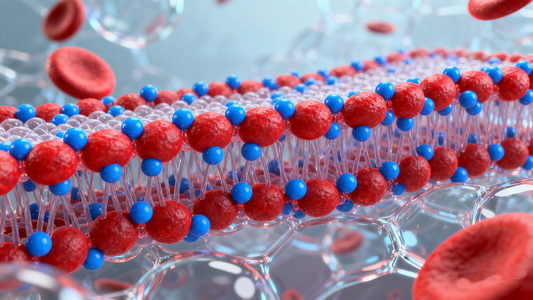
Multifunctional Smart Hydrogel Coating: A New Strategy for Antibacterial, Anticoagulant, and Anti-Inflammatory Protection in Blood-Contacting Devices
Blood-contacting medical devices—such as central venous catheters, artificial hearts, and blood filtration equipment—have saved countless lives. However, they also pose serious risks of complications: thrombosis, infection, and inflammation. Even worse, these complications are not independent but mutually reinforcing, creating a vicious cycle. Finding a way to address all three simultaneously has long been a challenge in the field of biomaterials.
Recently, a research team led by Prof. Fanjun Zhang at Sichuan University reported an important breakthrough in Biomacromolecules (impact factor 6.978). They developed a multi-in-one hydrogel coating that enables blood-contacting devices to exhibit antibacterial, anticoagulant, and anti-inflammatory properties at the same time—showing great promise for clinical applications.
Why Is This Coating Needed?
-
Thrombosis risk: When blood comes into contact with a device surface, proteins and platelets are activated, often resulting in thrombus formation. Detached thrombi may cause life-threatening complications such as cerebral infarction or pulmonary embolism.
-
Infections: Long-term implants are highly susceptible to bacterial adhesion and biofilm formation, which are resistant to antibiotics. In severe cases, the device must be replaced, and infections can be fatal.
-
Inflammation: Almost every implant triggers some degree of inflammatory response, which can further worsen both thrombosis and infection.
Therefore, an intelligent coating that can “fight all three” complications is of immense clinical value.
Innovative Design: Antibacterial + Anticoagulant + Smart Anti-Inflammatory
The research team built the coating on a hydrogel matrix, integrating two key components:
-
Silver nanoparticles (nano-Ag)
-
Formed in situ within the hydrogel.
-
Provide long-lasting, broad-spectrum antibacterial performance against both Gram-positive and Gram-negative bacteria.
-
Prevent bacterial adhesion and biofilm formation.
-
-
Dexamethasone (Dex) with ROS-triggered release
-
Dex is a well-known anti-inflammatory drug.
-
Researchers grafted Dex to the hydrogel via a reactive oxygen species (ROS)-sensitive thioketal (TK) bond.
-
In inflamed environments, ROS levels rise, breaking TK bonds and releasing Dex precisely where needed.
-
This “on-demand release” avoids side effects and unnecessary drug waste.
-
Meanwhile, the hydrogel’s carboxyl, hydroxyl, and sulfonic groups mimic heparin’s functions, giving the coating excellent anticoagulant properties.
Key Findings
-
Anticoagulant performance: In rabbit blood circulation tests, bare PVC catheters developed thick thrombi, while hydrogel-coated catheters remained nearly thrombus-free.
-
Antibacterial properties: The coating achieved >99% killing efficiency against E. coli and S. aureus and significantly reduced bacterial adhesion.
-
Anti-inflammatory effects: In animal models, hydrogel-coated catheters showed reduced infiltration of macrophages and T cells, and inflammatory markers TNF-α and IL-1β dropped significantly.
-
Biocompatibility: Hemolysis rates were <1%, and cell viability exceeded 80%, indicating good safety.
Clinical Significance
This “multi-in-one” hydrogel coating offers several advantages:
-
Integrated protection: Anticoagulant, antibacterial, and anti-inflammatory functions working together.
-
Self-adaptive response: ROS-triggered release ensures drugs are delivered only when and where inflammation occurs.
-
Biocompatible and stable: Suitable for long-term implantation.
In the future, such coatings could be widely applied to blood-contacting medical devices, reducing infection and thrombosis risks, extending device lifespan, and improving treatment safety.
Conclusion
As medical devices become increasingly essential in clinical practice, ensuring their biocompatibility has become a priority. This study demonstrates a promising pathway: using smart hydrogel coatings that combine anticoagulant, antibacterial, and self-adaptive anti-inflammatory functions.
This is not only a breakthrough in materials science but also a step toward safer, longer-lasting, and more reliable medical devices—ultimately improving patients’ quality of life and supporting the clinical translation of next-generation biomaterials.
Would you like me to simplify this English version into a more popular science style, so it’s easier for non-specialist readers to understand (e.g., by using analogies for “ROS-triggered release”)?


